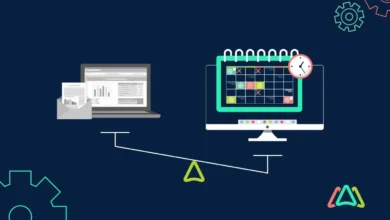Why OT Security Standards Are Crucial for Protecting Critical Infrastructure

In today’s interconnected world, the protection of critical infrastructure has become more important than ever before. From power grids to transportation networks, water treatment facilities to manufacturing plants, these essential systems are increasingly vulnerable to cyber threats.
73% of organizations experienced intrusions impacting their Operational Technology (OT) systems in 2024, a sharp increase from 49% in 2023. This alarming trend highlights why robust operational technology cyber security measures are no longer optional but essential.
When these systems fail, the consequences extend beyond data breaches to potential physical harm, environmental damage, and disruption of essential services that millions rely on daily.
The Evolving Landscape of OT Cybersecurity
The security landscape for industrial control systems has transformed dramatically over the past decade. What was once air-gapped and isolated infrastructure is now increasingly connected to networks, remote access points, and the internet, creating new vulnerabilities.
An OT environment differs fundamentally from traditional IT systems in several critical ways. While IT systems primarily focus on data, what is an ot environment comes down to is its emphasis on physical processes and operational reliability above all else.
OT systems often run on specialized hardware and software designed for specific operational functions rather than general computing. These systems typically have extended lifecycles of 15-20+ years, creating significant challenges when integrating modern security practices.
The convergence of IT and OT networks presents unique security challenges. As companies connect previously isolated control systems to business networks for increased efficiency and monitoring, they inadvertently create new attack vectors. These integration points become prime targets for attackers looking to pivot from corporate networks into critical infrastructure.
The Expanding Threat Surface in Industrial Control Systems
State-sponsored threat actors increasingly target critical infrastructure as part of broader geopolitical strategies. These sophisticated attackers often possess the resources and patience to execute long-term campaigns against hardened targets. Many employ advanced persistent threats (APTs) specifically designed to infiltrate industrial systems.
Ransomware has evolved to directly target ot cybersecurity systems, with specialized variants designed to identify and encrypt industrial control system components. Unlike traditional IT ransomware, these attacks can halt physical operations entirely, creating immediate safety risks and financial damage.
The industrial supply chain introduces additional vulnerabilities unique to OT environments. From hardware components to third-party software, each element in the supply chain represents a potential entry point for attackers. This complex web of dependencies demands specialized security approaches beyond traditional IT methods.
As these threats continue to evolve, organizations must adapt their security strategies accordingly to protect critical operations from increasingly sophisticated attacks.
Core OT Security Standards and Frameworks That Drive Protection
Implementing standardized frameworks provides organizations with structured approaches to securing their operational technology. These frameworks serve as roadmaps for developing comprehensive security programs tailored to industrial environments.
IEC 62443: Standard for Industrial Automation Security
The IEC 62443 series stands as the premier international standard specifically designed for industrial automation and control system security. This framework addresses security at multiple levels, from individual components to entire systems.
Component-level security requirements within IEC 62443 establish baseline expectations for manufacturers developing control system products. These requirements include secure-by-design principles, authentication mechanisms, and communication protection.
For system integrators, IEC 62443 provides detailed guidance on secure implementation practices. This includes proper network segmentation, defense-in-depth strategies, and secure configuration of control systems across industrial environments.
The standard also addresses operational security through policies and procedures for ongoing maintenance and incident response. These elements help organizations maintain security throughout the entire lifecycle of their systems.
NIST Cybersecurity Framework Extensions for OT
The NIST Cybersecurity Framework offers valuable guidance for cyber security for operational technology, with specific extensions for industrial control systems. This adaptable framework helps organizations identify, protect, detect, respond to, and recover from cyber threats.
NIST Special Publication 800-82 specifically addresses ICS security concerns, providing detailed technical controls and operational guidance. It recognizes the unique requirements of OT systems, including the need for continuous availability and safety-critical functions.
The framework’s flexibility allows organizations to adopt security controls appropriate for their specific operational environments while maintaining alignment with broader organizational risk management strategies.
Industry-Specific Standards Transforming Operational Security
Different industries face unique challenges requiring specialized security frameworks. These targeted standards address sector-specific requirements beyond general OT security guidelines.
In the energy sector, NERC CIP regulations mandate specific security controls for electric utilities. These requirements include everything from electronic security perimeters to incident response planning, with significant penalties for non-compliance.
The oil and gas industry relies on standards like API 1164 to secure pipeline operations. This framework addresses the unique challenges of geographically distributed infrastructure and remote operations centers common in this sector.
Water utilities employ AWWA cybersecurity guidance to protect treatment and distribution systems. These guidelines help safeguard water quality and availability, which are essential public health concerns. These industry-specific frameworks complement broader standards like IEC 62443, creating comprehensive protection for critical infrastructure across sectors.
The Real-World Impact of Standards Implementation
When properly implemented, OT security standards deliver measurable improvements to operational resilience and risk reduction. The benefits extend beyond theoretical security to tangible operational advantages.
Before and After Standards Adoption
Organizations implementing structured OT security programs based on established standards consistently report significant improvements in their security posture. A notable electric utility reduced its security incidents by over 60% within two years of adopting NERC CIP standards.
In manufacturing, a global automotive company implemented IEC 62443 controls across its production facilities. The result was not just enhanced security but also improved operational reliability as previously unidentified system vulnerabilities were addressed systematically.
Several documented cases demonstrate how standards-based security controls prevented potential breaches. An oil refinery’s segmentation controls, implemented according to industry standards, contained a ransomware attack on non-critical systems, avoiding a potentially catastrophic shutdown.
Regulatory Compliance Benefits Beyond Security
Beyond direct security improvements, adherence to OT security standards delivers significant business advantages. Compliance with industry regulations reduces legal and financial risks associated with security breaches.
Organizations with mature OT security programs often qualify for reduced insurance premiums. Insurers increasingly recognize standards adoption as a risk reducer, offering financial incentives through lower premiums or expanded coverage options.
Stakeholder confidence grows substantially when organizations demonstrate commitment to established security frameworks. This applies to shareholders, customers, regulators, and the public, all of whom have growing expectations for critical infrastructure protection.
By implementing comprehensive standards-based approaches, organizations protect not just their operations but also their reputation and financial stability.
Building a Standards-Based OT Security Program
Implementing effective OT security requires a structured approach that accounts for the unique characteristics of industrial systems while leveraging established best practices.
Adopting OT security standards isn’t just good practice, it’s essential for ensuring the continued operation of the critical infrastructure we all depend on. The increasing frequency and sophistication of attacks demand proactive measures grounded in established frameworks.
By implementing comprehensive standards like IEC 62443, NIST, and industry-specific regulations, organizations can significantly reduce their vulnerability to threats that could otherwise cause catastrophic damage.
Remember that security is not a one-time implementation but an ongoing process that requires continual assessment and improvement. The stakes couldn’t be higher when it comes to protecting power grids, water systems, and manufacturing facilities that our society depends on daily.
Common Questions About OT Security Standards
How do operational technology security standards differ from traditional IT security frameworks?
OT security standards prioritize safety, availability, and integrity of physical processes, while addressing longer equipment lifecycles (15-20+ years), limited computing resources, and proprietary protocols not found in traditional IT frameworks.
What baseline security measures should every OT environment implement?
Every OT environment should implement asset inventory, network segmentation, access controls, secure remote access capabilities, vulnerability management, and incident response planning, all guided by appropriate industry standards.
How often should organizations reassess their compliance with OT security standards?
Organizations should conduct formal reassessments annually, with continuous monitoring processes in place. Additional assessments should follow significant system changes, after security incidents, or when standards are updated.
How are OT security standards addressing the challenges of remote operations?
Modern standards now incorporate secure-by-design requirements for remote access, including multi-factor authentication, encrypted communications, access logging, and session monitoring specifically designed for industrial control system environments.




